Featured Comment
Perfect sauce for wakame mix and tofu. Garnished with lemon slices. Served with inari sushi and mochi for dessert. Well received by friends!!!
★★★★★
– M
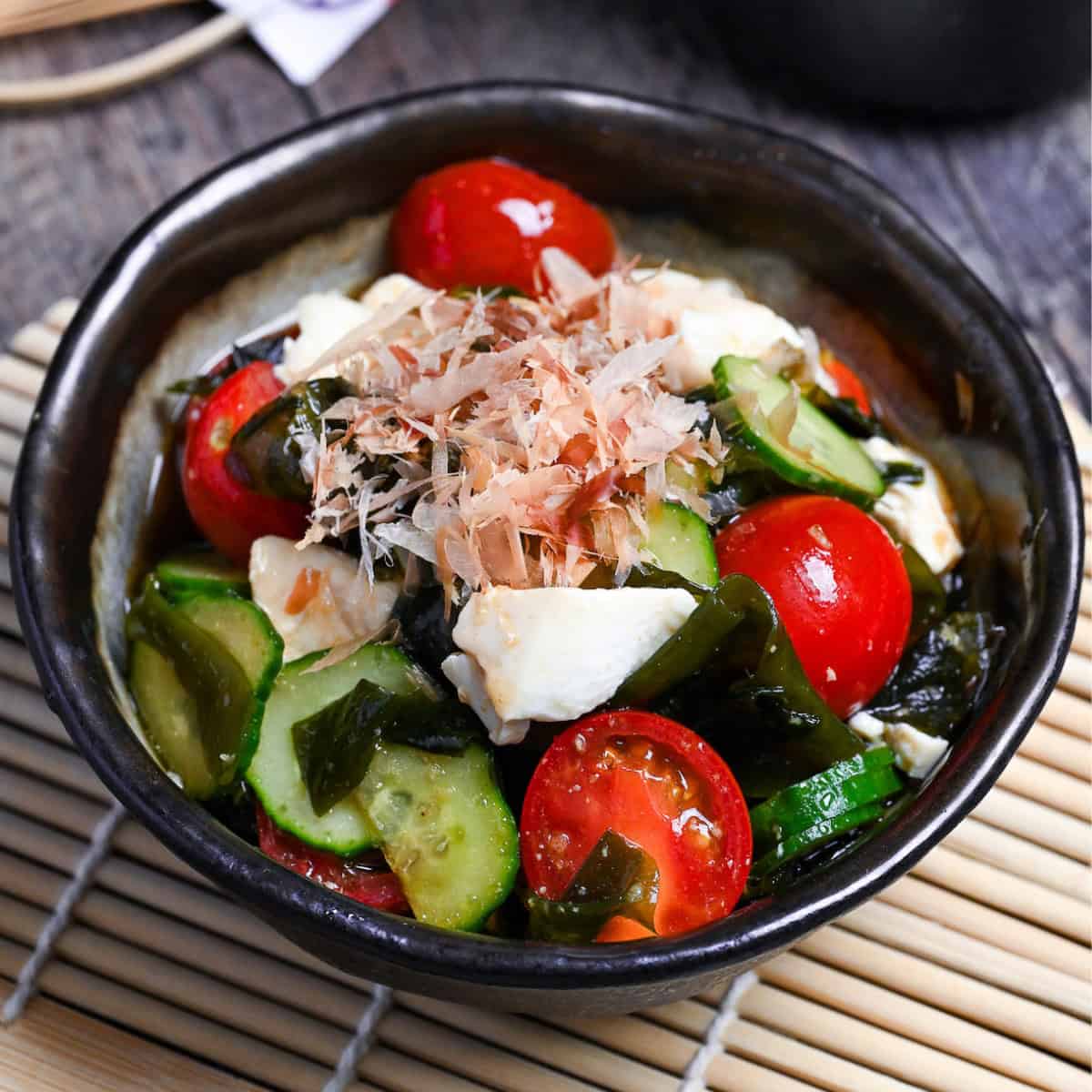
Wakame Salad
Recipe Snapshot
- What is it? A refreshing Japanese seaweed salad with tofu, cucumber, and sesame-ginger dressing.
- Flavor profile: Tangy, Refreshing, Light
- Why you’ll love this recipe: It’s authentic yet flexible, letting you enjoy real Japanese flavors while keeping your family’s meals clean and wholesome.
- Must-haves: Dried wakame seaweed, Toasted sesame oil, Silken tofu.
- Skill Level: Easy
- Suitable for Meal Prep? Yes!
Summarize & Save this content on:

What is Wakame Salad?
Wakame salad (わかめサラダ) is a refreshing Japanese side dish made with rehydrated seaweed, crisp vegetables, and a light, savory dressing. The star ingredient, wakame, is a type of edible seaweed that’s been enjoyed in Japan for centuries, prized for its briny flavor.
What I love most is how versatile wakame is! You can enjoy it chilled in a salad, along with cold ramen noodles, or warm in a soothing bowl of miso soup and even tempura soba. A little goes a long way, making it a pantry staple worth keeping on hand.
Wakame Salad Ingredients
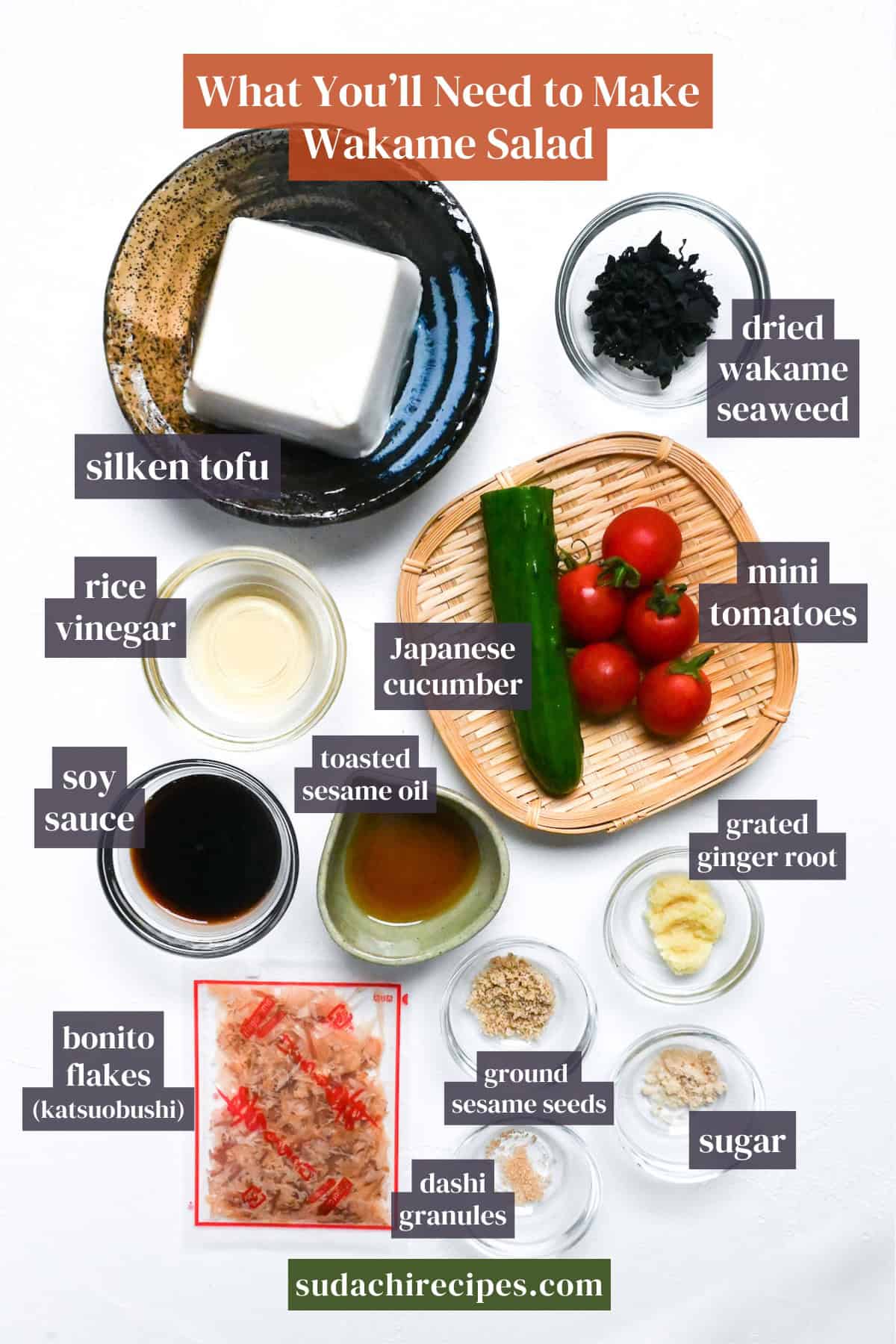
- Dried wakame seaweed: You’ll find dried wakame at natural grocers and at Asian markets. Online retailers also stock plenty if that’s fastest. For a no-stress swap, Korean miyeok (the same species as wakame) works 1:1.
- Japanese cucumbe: Slender, thin-skinned, and nearly seedless. Persian cucumbers are a near-match, and long English cucumbers at big grocers are easy to grab. Asian or Japanese markets may carry Japanese varieties in season. If you go with English cucumbers, simply scrape out the seeds and peel a few light stripes so each slice stays delicate. Persian cucumbers can go in as-is.
- Silken tofu (kinugoshi): I like silken here. You can pick up shelf-stable silken tofu easily. Firm or medium-firm tofu works too if that’s what you have. It’ll be a little springier and less delicate, but it holds its shape nicely for leftovers.
Substitutions Ideas
- Rice vinegar substitutes: White wine vinegar or apple cider vinegar work well, but just use about three-quarters of the amount since they’re sharper than gentle rice vinegar. Add a pinch more sugar to balance the stronger acidity. Apple cider vinegar is especially forgiving with its subtle fruity sweetness.
- Alternative ingredients: In Japan, some people often add daikon radish (julienned like in daikon salad), sliced onion, broccoli sprouts, boiled octopus or squid, or blanched okra. Each brings its own texture while keeping that clean, ocean-fresh flavor profile.
- Mini tomatoes: Cherry or grape tomatoes are perfect! Their firm flesh won’t water down your dressing like slices of larger tomatoes would.
Have trouble finding Japanese ingredients? Check out my ultimate guide to Japanese ingredient substitutes!
How to Make My Wakame Salad
If you prefer to watch the process in action, check out my YouTube video of this wakame salad recipe!
i. Add dried, cut wakame to a medium bowl and cover with plenty of cold water. Soak 5-10 minutes, just until the pieces turn glossy green and feel springy between your fingers; over-soaking makes them limp.
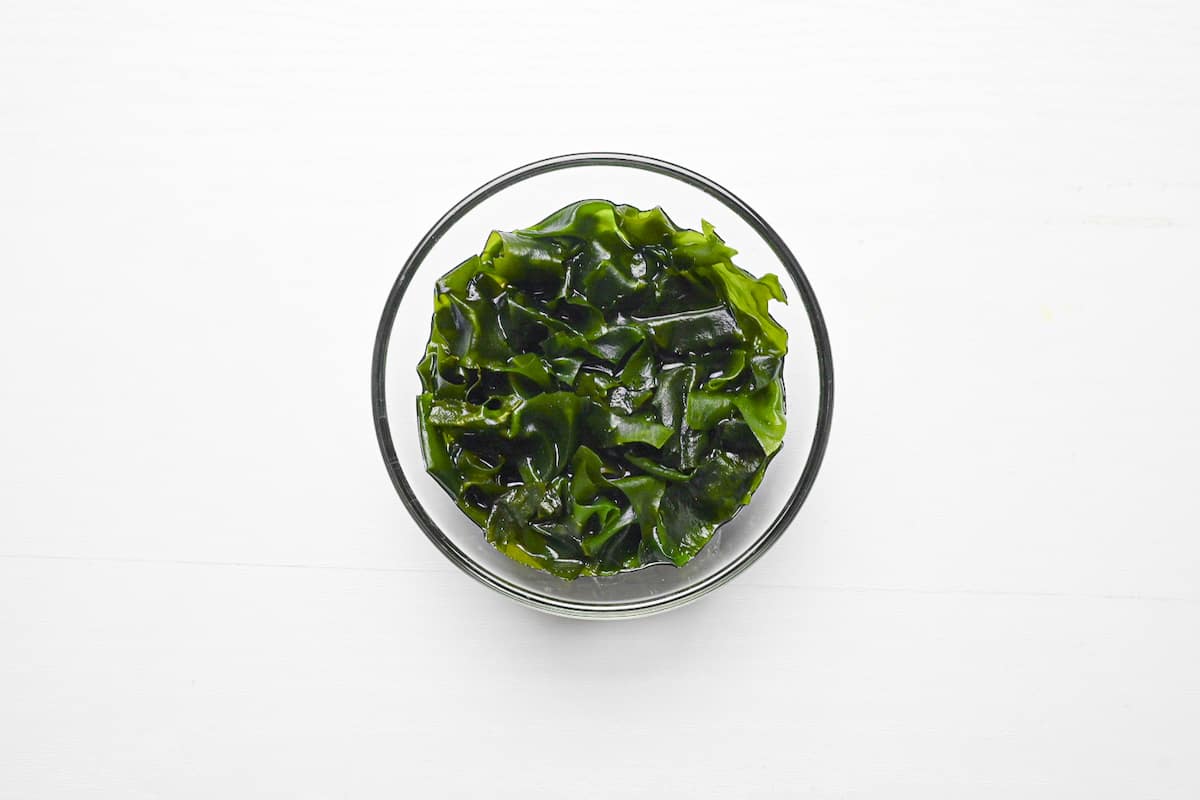
Over-soaking turns wakame into a mushy disappointment, and there’s real science behind this. When dried seaweed sits in water too long, the cell walls absorb so much moisture they lose their structural integrity.
i. Wrap silken tofu in a double layer of paper towel and microwave at 600 W for 1 minute 30 seconds to gently drive off surface moisture.
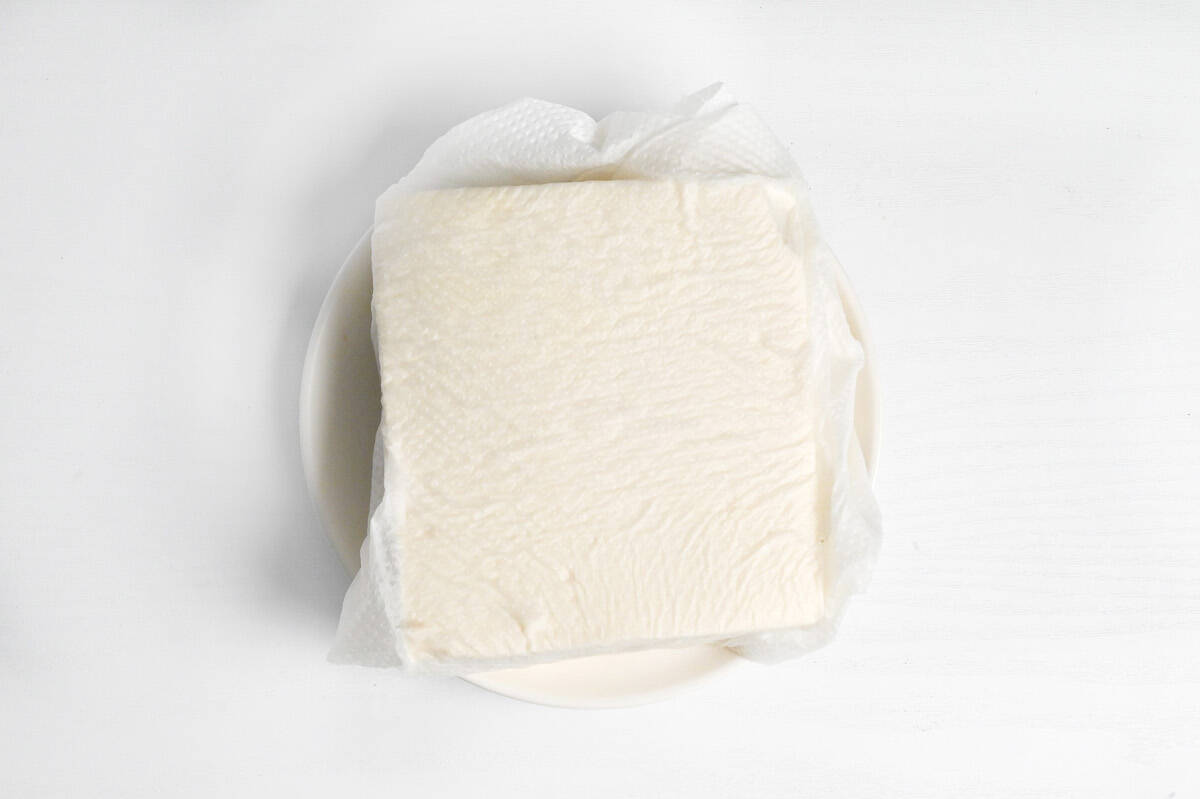
Let it cool for a couple of minutes so it firms back up, then cut into bite-size cubes. If you prefer not to microwave, simply wrap with kitchen paper and rest for 5-10 minutes before patting very dry.
i. In a small bowl or measuring cup, whisk together dashi granules, rice vinegar, Japanese soy sauce, sugar, toasted sesame oil, ginger paste, and ground toasted sesame. Whisk until the mixture looks slightly thickened and shiny.
A little aromatic oil rounds flavors and softens seaweed’s briny edges because lipids carry and release many aroma compounds.
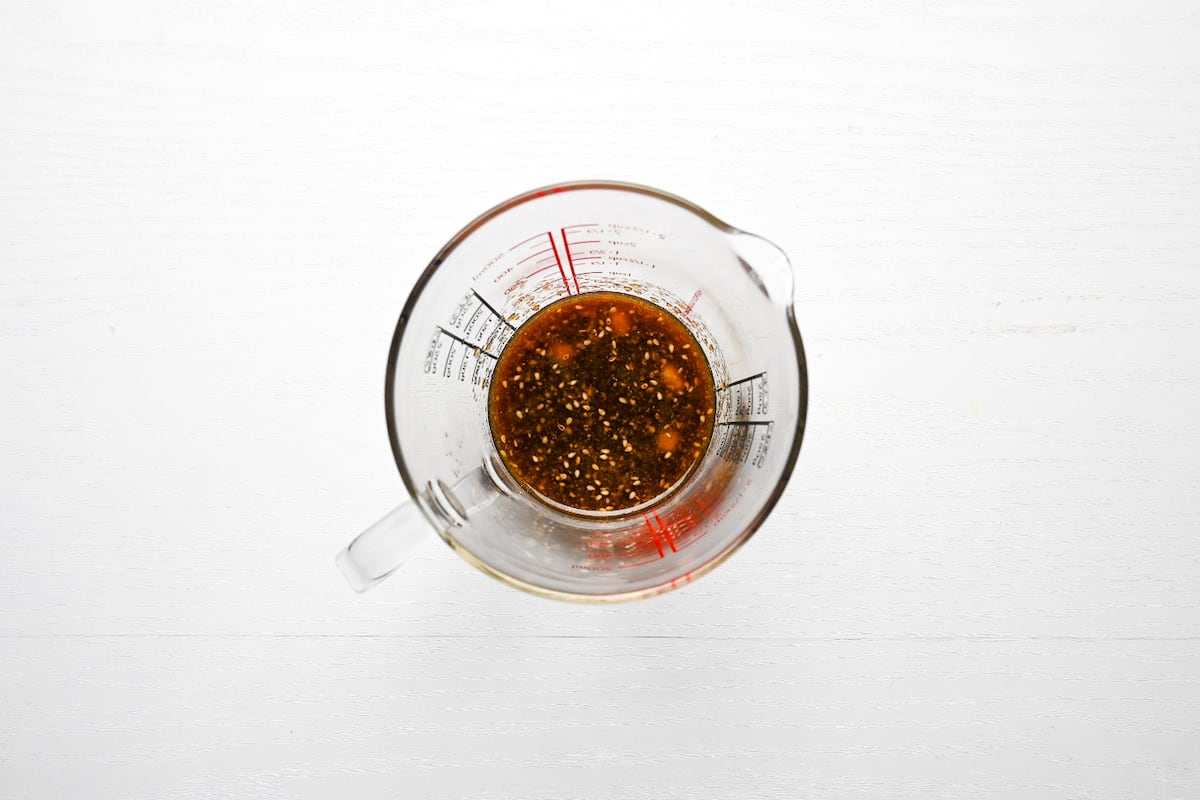
Wakame and soy sauce supply glutamate, while a touch of katsuobushi-based dashi adds inosinate, together they create umami synergy, boosting savoriness far beyond either alone (tests show peak intensity when glutamate and inosinate are in similar proportions). This is why even a small spoonful of dashi in the dressing makes the salad taste “restaurant-level.”
ii. Drain the wakame well, then squeeze it gently in your palms to expel excess water without tearing. In a large bowl, combine wakame with thinly sliced Japanese cucumber and cherry tomatoes, and add the tofu. Pour on the dressing and toss gently just until coated.
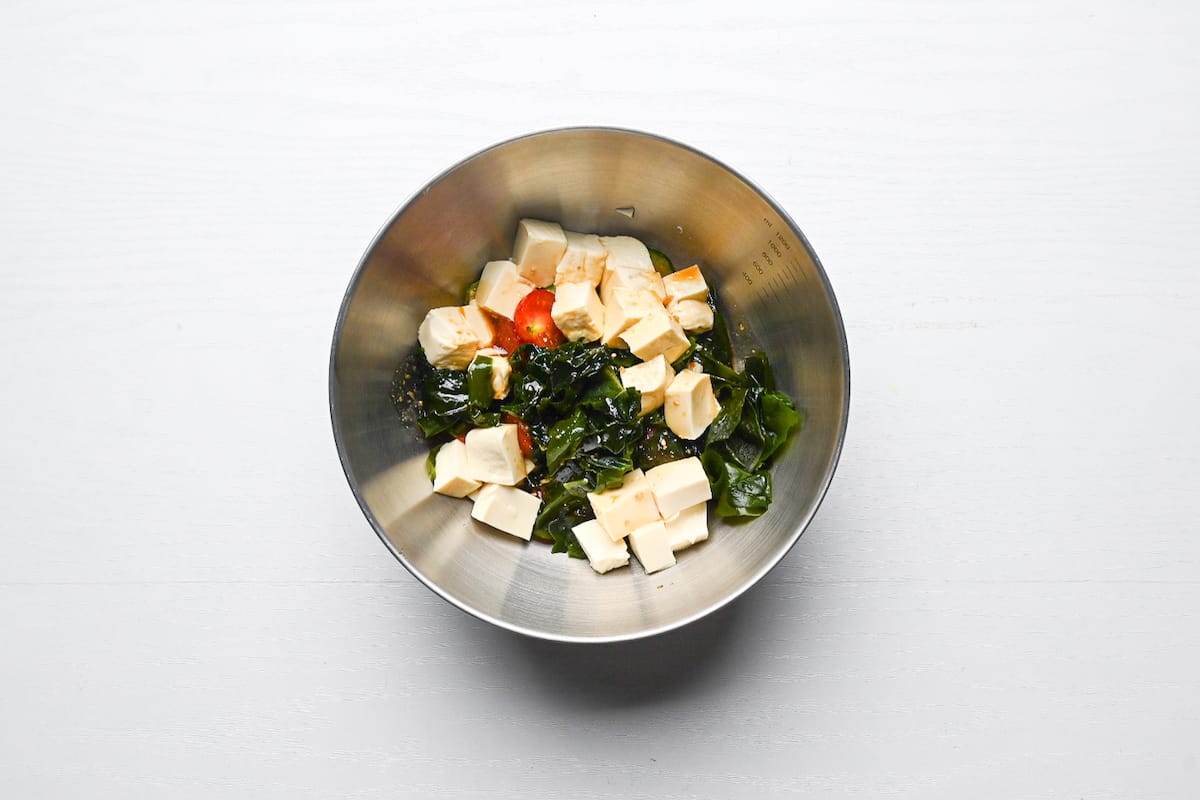
iii. Cover the bowl and chill 20-30 minutes so the wakame crisps up and the dressing permeates. Keep the salad at or below 4℃ (39°F) until serving for best quality.
i. Divide into bowls, then shower with katsuobushi and a pinch more toasted sesame.
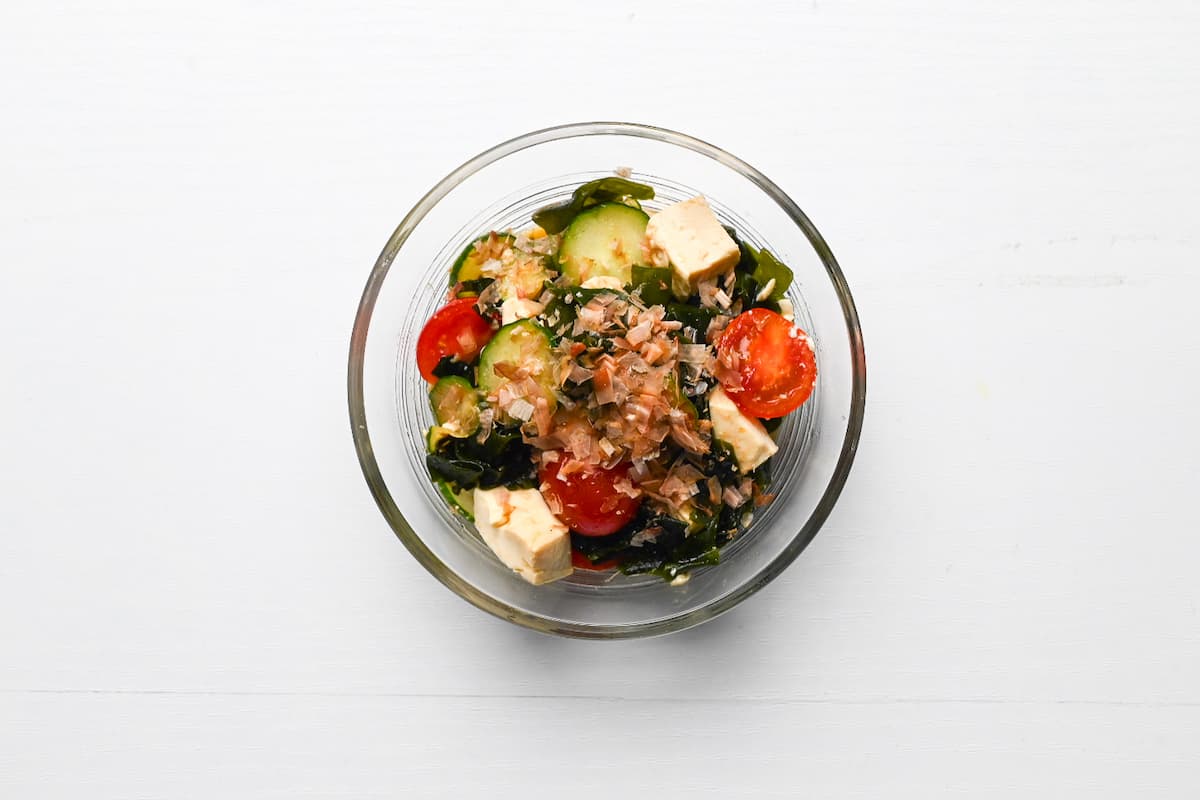

Essential Tips & Tricks
- Rehydrate wakame in cold water for only 5-10 minutes.
- Always drain and gently squeeze wakame before mixing.
- Dry tofu well by microwaving, pressing, or chilling.
- Use sesame oil sparingly. A little boosts aroma, too much makes the salad greasy.
- Add dashi or katsuobushi for umami synergy.
With these simple tips in mind, you’re set for success every time you make wakame salad.
Storage & Meal Prep
Fridge: Airtight glass or ceramic container, 2-3 days. The vinegar and salt content naturally preserves the salad, but vegetables will continue releasing moisture over time.
Freezer: Not recommended. Freezing destroys the cellular structure of cucumber and wakame.
Meal Prep: Best stored with components separated. Keep rehydrated wakame, prepped vegetables, and dressing in separate containers for up to 2 days. Combine just before serving to maintain optimal texture.
What to Serve With This Recipe
- Grilled Salmon with Salt (Salmon Shioyaki)
- Nikujaga (Japanese Meat and Potato Stew)
- Japanese-Style Hamburg Steak

Wakame Salad Q&A
You probably soaked dried wakame too long or left it in hot water. Use a timer: 5 minutes in cold water. If over-soaked, repurpose it in miso soup.
The problem is that it’s not being drained properly. Squeeze the wakame well by hand.
Mix thoroughly from the bottom of the bowl so dressing coats evenly. If flavor dulls after sitting, add a splash of ponzu or soy sauce before serving, or revive aroma with a few fresh drops of sesame oil or chili oil.

More Japanese Salad Recipes
Hungry for more? Explore my collection of Japanese salad recipes to discover fresh, authentic dishes that will become your new favorites!
Did You Try This Recipe?
I would love to hear your thoughts!
💬 Leave a review and ⭐️ rating in the comments below. 📷 I also love to see your photos – submit them here!
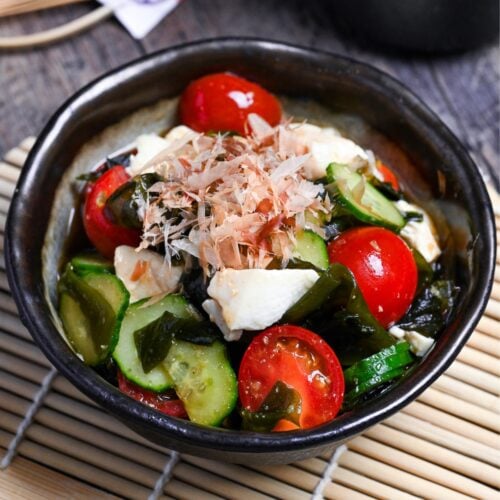
Japanese Wakame Seaweed Salad
Ingredients
Wakame Salad
- 1 tbsp dried wakame seaweed cut type, approx 5g per tbsp
- 150 g silken tofu
- 50 g Japanese cucumber or Persian cucumber, thinly sliced
- 5 mini tomatoes halved
- bonito flakes (katsuobushi) optional (omit for plant-based diets)
Wakame Salad Dressing
- 1 tbsp dashi stock or water and a pinch of dashi granules or water only
- 1 tbsp rice vinegar
- 1 ½ tbsp Japanese soy sauce (koikuchi shoyu)
- ¼ tsp sugar
- 1 tbsp toasted sesame oil
- 1 tsp ginger paste or freshly grated ginger root
- ½ tsp ground sesame seeds white preferred
My recommended brands of ingredients and seasonings can be found in my Japanese pantry guide.
Can’t find certain Japanese ingredients? See my substitution guide here.
Instructions
- Soak 1 tbsp dried wakame seaweed in a bowl of warm water according to the instructions on the packaging. (Typically 5-10 mins).

- Wrap 150 g silken tofu in kitchen paper and microwave it for 1 minute 30 seconds at 600W. Cool slightly before cutting it into bitesize cubes.

- Mix the dressing ingredients (1 tbsp dashi stock, 1 tbsp rice vinegar, 1 ½ tbsp Japanese soy sauce (koikuchi shoyu), ¼ tsp sugar, 1 tbsp toasted sesame oil, 1 tsp ginger paste and ½ tsp ground sesame seeds) in a small bowl or jug.

- Drain the water from the wakame and squeeze it thoroughly to remove any excess water. Add it to a large mixing bowl along with 50 g Japanese cucumber, 5 mini tomatoes and cubed tofu. Add the dressing and mix until well distributed. (Mix gently to avoid breaking the tofu too much. Alternatively, mix without the tofu and add it at the end.)Cover the bowl and chill in the fridge for 20-30 minutes before serving.

- Divide into serving bowls, sprinkle with bonito flakes (katsuobushi) and enjoy!

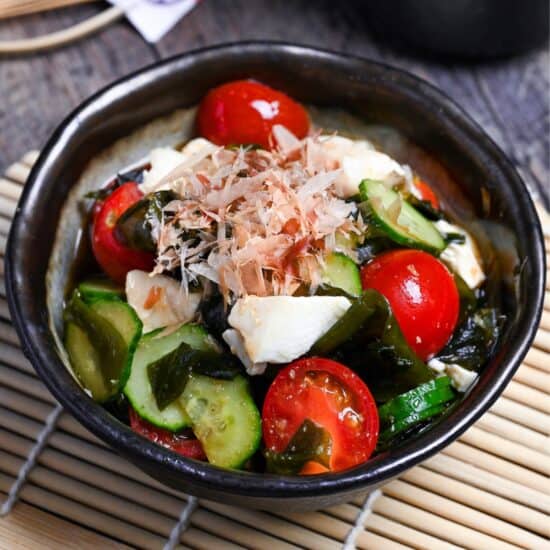




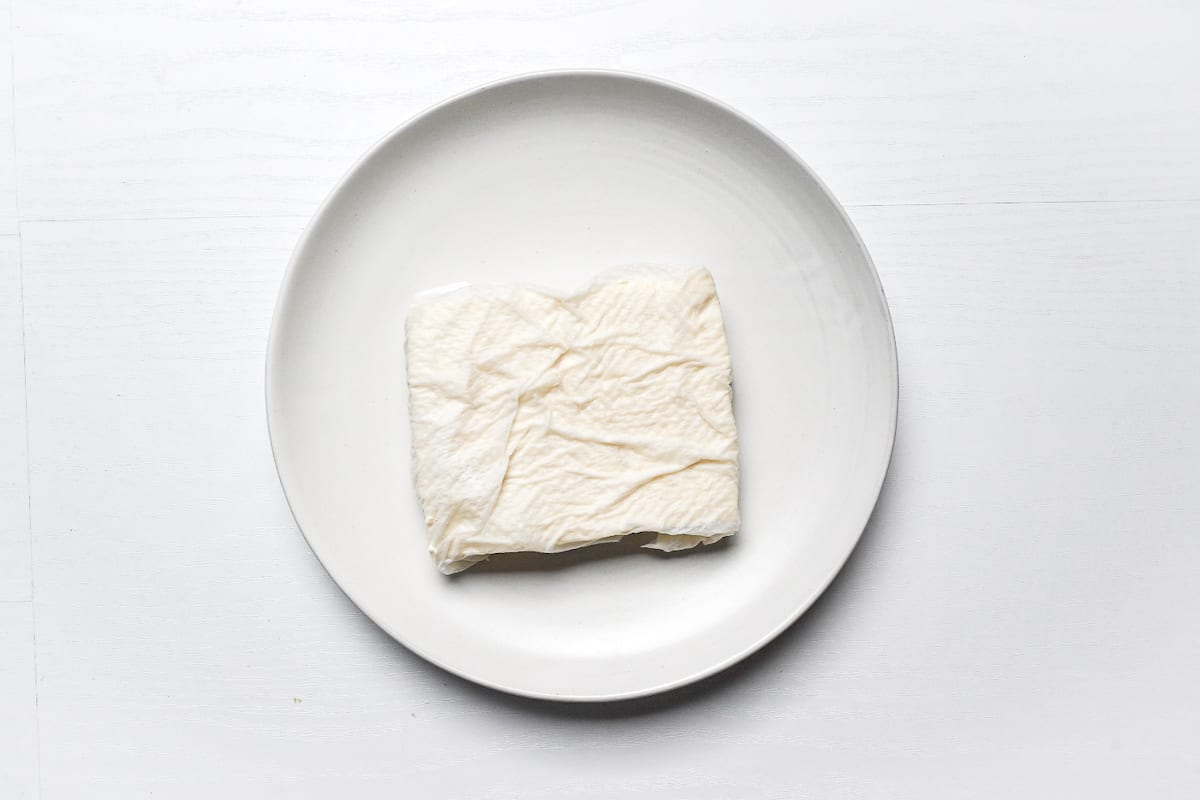
Great combination to highlight local produce. I lined wakame mix with local lettuce, clover sprouts and julienne carrots to add color. Perfect sauce for wakame mix and tofu. Garnished with lemon slices. Served with inari sushi and mochi for dessert. Well received by friends!!!
Hi M,
Thank you for the comment!
Great ideas to add more color, it must have been beautiful! I’m happy you and your friends had a good time.
Yuto